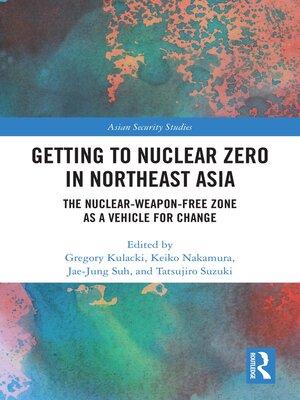Getting to Nuclear Zero in Northeast Asia
ebook ∣ The Nuclear-Weapon-Free Zone as a Vehicle for Change · Asian Security Studies
By Gregory Kulacki

Sign up to save your library
With an OverDrive account, you can save your favorite libraries for at-a-glance information about availability. Find out more about OverDrive accounts.
Find this title in Libby, the library reading app by OverDrive.



Search for a digital library with this title
Title found at these libraries:
| Library Name | Distance |
|---|---|
| Loading... |
This book presents realistic alternatives to security policies based on nuclear weapons for the Northeast Asian region.
Northeast Asian governments and populations feel less secure than ever, and the governments of the USA, Russia, China, and North Korea are all expending considerable resources on increasing their nuclear arsenals. This book presents realistic alternatives to security policies dependent on threats to use nuclear weapons and demonstrations of the resolve to use them in a war. Those alternatives are grounded in the well-established concept of common security. The long-term goal of these alternatives is the establishment of a nuclear-weapon-free zone in Northeast Asia. This book demonstrates that lessons learned during the creation of existing nuclear-weapon-free zones can be successfully adapted, using the proposed alternatives to nuclear threats, to the considerably more challenging circumstances that exist in contemporary Northeast Asia. More importantly, it makes the case that the mere process of pursuing this objective, even if the goal is not realized for many decades, would help facilitate regional risk-reduction measures and global nuclear arms control measures that could lead, in the long term, to the general and complete disarmament promised by the Nuclear Nonproliferation Treaty (NPT) and the Treaty on the Prohibition of Nuclear Weapons (TPNW) of 2021. This book will be of interest to students of nuclear proliferation, Asian security, foreign policy, and International Relations.







